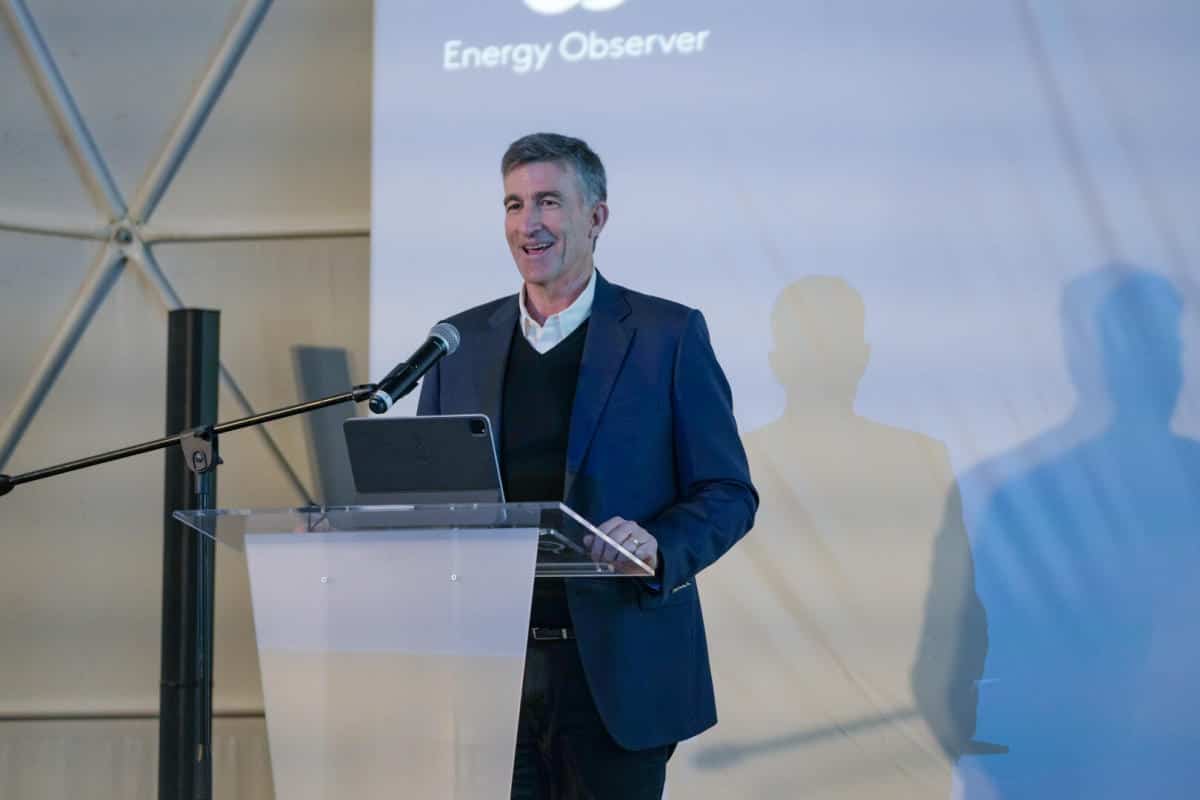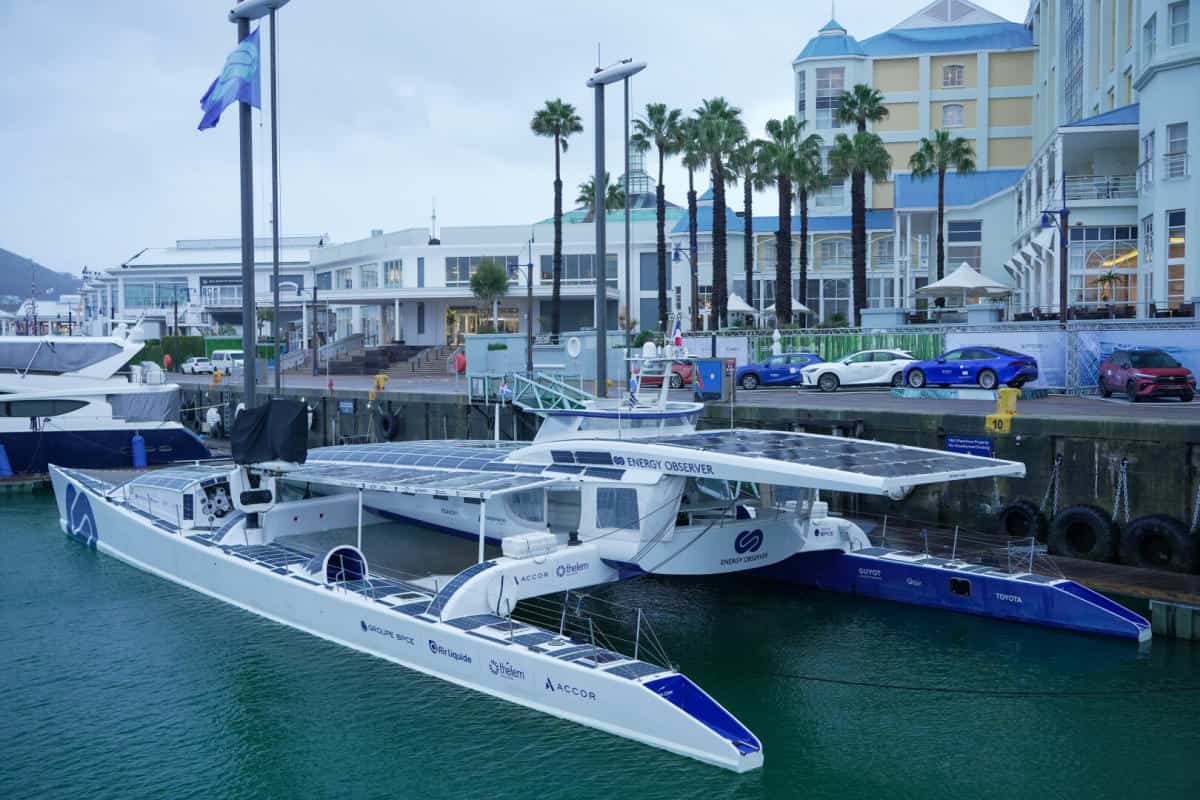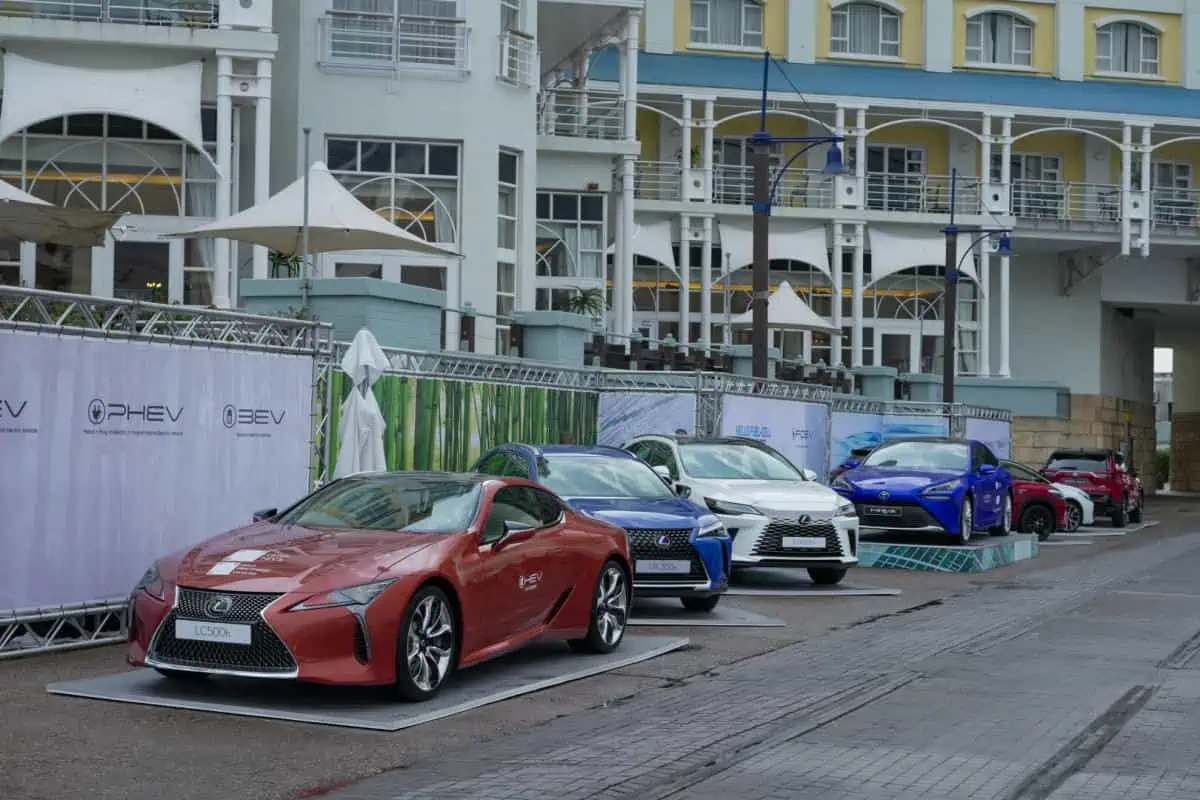There’s a rather unusual vessel docked at Pier 6 at the V&A Waterfront in Cape Town. Aptly named Energy Observer, she’s a laboratory vessel, self-sufficient in energy and a prominent global advocate for energy transition. Cape Town is the 80th stopover of her Odyssey, where the vessel has been docked alongside her educational exhibition village at the V&A Waterfront since June 12 (and open free of charge to the public). She will remain in port until June 20. This local stopover is particularly timely as energy has become a key issue for South Africa.
Power cuts punctuate the country’s daily life, and the transition to a less carbon-intensive energy mix is as much a question of social justice as it is of public health. The country – which is committed to reducing its greenhouse gas emissions by 2030 – does not lack the potential to develop renewable energies nor the ambition to support the gradual phase-out of coal: a resource that remains at the heart of economic development providing more than 92,000 jobs and serving as the country’s principal source of energy and electricity. The social impact of an energy transition on direct and indirect workers thus remains a significant concern. In this context, during the COP26 in Glasgow, France, along with the European Union, the United Kingdom, Germany, and the United States, committed to support the “Just Energy Transition” to accelerate the decarbonisation of the South African economy by accompanying the country in its gradual exit from coal. They established three priority focuses: the energy sector, green hydrogen, and electric vehicles. Energy Observer is in many ways an environmental ambassador, illustrating the paradox of many countries, including our own: how to guarantee access to electricity for all while reducing the CO2 emissions linked to its production? How to accompany the phase-out of coal without risking an economic and social crisis? The deep interconnection between energy, economic development, and social justice is at the heart of Energy Observer’s stopover program, which will mobilise the main players in the energy, hydrogen, and low-carbon mobility sectors around the laboratory vessel, a demonstrator of virtuous energy systems that can be replicated on a larger scale. Schoolchildren, academics, associations, and the general public will be able to discover solutions developed across the world that offer a positive and concrete perspective on energy transition, as well as an exclusive audiovisual production broadcast in the exhibition village throughout the event.
Leaving in 2017 from Saint-Malo, her French home port, Energy Observer is sailing the seas for a round-the-world Odyssey planned until 2024. The vessel has already sailed more than 50,000 nautical miles (twice around the world!), conducted 79 stopovers (from Paris to London, from St. Petersburg to the Arctic Circle, from Panama to the Galapagos, from San Francisco to Singapore), including 16 with her traveling educational village, and visited more than 40 countries. Developed from an award-winning legendary catamaran, Energy Observer is a laboratory for the ecological transition designed to push back the limits of zero-emission technologies. Hydrogen, solar power, wind power, and hydro-power: all solutions are experimented with, tested, and optimised to make clean energy a concrete reality accessible to all.
Toyota & Energy Observer
Toyota, as the world’s leading automotive company and a pioneer of alternative propulsion technologies, is proud to be an official partner of Energy Observer. In support of this partnership, Toyota South Africa has likewise seen to the mobility needs of the Energy Observer crew for the duration of the South African stopover leg and has used the opportunity to display a range of New Energy Vehicles at the V&A Waterfront. Forming the centrepiece of the NEV stand adjacent to the Energy Observer is the Mirai Hydrogen Fuel Cell Vehicle. Just two have been brought into South Africa for experimental purposes and this is the third public outing for this model. Toyota is also showcasing the RAV4 Plug-in Hybrid – this particular model has been tested by several media platforms and will in time form part of the current RAV4 line-up which includes the popular hybrid model. The other two Toyotas on display are currently available for sale – the Corolla Hatch which is now exclusively a hybrid range and the freshly-launched Corolla Cross GR Sport Hybrid. Sister brand Lexus is also part of the NEV display which is entirely appropriate as nearly all models in this stable – with the exception of LX and RC F – are available as hybrids. The three-model line-up at the V&A Waterfront include the eye-catching LC Hybrid coupe, the RX Plug-in Hybrid (an all-new range available in petrol and hybrid, the PHEV is under study) as well as a full-electric UX. The latter is also not for sale in SA but all other models in the UX range (hybrid-exclusive) can be found on the local Lexus price list.
Since its christening in Paris on 6 July 2017, Toyota has been part of the epic journey, starting with Toyota France as the Energy Observer’s mobility partner, providing hybrid and hydrogen fuel cell vehicles at each stage of its ‘Tour de France’. By mid-2018, the partnership was raised to a higher level when Toyota Motor Europe took over as an official partner, providing mobility solutions for all future stopovers.
2019 was a pivotal year for the partnership as this was when Energy Observer and Toyota teamed up to install Toyota’s leading fuel cell technology in the Energy Observer. Toyota Europe’s Technical Centre specially developed a fuel cell system, using components first introduced in the Toyota Mirai and fitted it into a compact module suitable for marine applications delivering optimum power, efficiency and reliability. Hydrogen is created onboard by means of the desalination and electrolysis of seawater – this process also means that the Energy Observer is self-sufficient in terms of potable water.
In 2020 the partnership became the property of Toyota Motor Corporation Japan (TMC) which is appropriate given the company’s global approach to environmental issues. This direction is encapsulated in the “Toyota Environmental Challenge 2050”, which includes objectives to minimise the environmental impact of vehicles on society throughout their lifecycle.
To this end, a multi-pathway approach has been adopted and Hybrid Electric Vehicle (HEV) technology has been at the forefront of this environmental crusade, which started over 25 years ago with the introduction of Prius. Toyota pioneered once again in 2014 with the introduction of the Mirai, the world’s first commercial car equipped with fuel cell electric vehicle (FCEV) technology and a major contributor to the success of the energy-autonomous Energy Observer.
Andrew Kirby, President and CEO of Toyota South Africa Motors (TSAM), reiterated the company’s stance on the future of mobility in SA. He was addressing a select group of Cape Town media who were invited to a special preview of the Energy Observer exhibition. This is the first opportunity Kirby has had to interact with media since the recently announced special visit by Hiroki Nakajima, Executive Vice President for Toyota Motor Corporation (TMC), in which a new Global and Regional Policy was announced, outlining Toyota’s new direction which is aptly called “Changing the Future of Cars”. The event in Durban was a special occasion in that TSAM was the first affiliate outside of Japan to receive this regional visit following the organisational changes and policy announcement by new TMC President, Koji Sato, on April 7th. For the full release please go to: MotorPress
Kirby highlighted the following in his briefing:
- Carbon Neutrality by 2050 with key milestones along the way being a 33% reduction of CO2 emissions by 2030 and 50% by 2035
- Multi-pathway approach through BEV, PHEV, FCEV, HEV, H2 and CN fuels
- 10 new BEVs globally by 2026, equivalent to 1.5 million vehicles
- For Plug-In Hybrid Electric Vehicles (PHEVs), battery efficiency will be increased to extend the EV-mode driving range beyond 200 km, thereby repositioning PHEVs as the “practical BEV”
- For Hybrids (HEVs), Toyota will continue to improve its product offering with a focus on quality and affordable prices, by accounting for local energy conditions and customer ease of use.
- TSAM positioned as “Mother Factory” to Africa
- HEVs to contribute to 40% reduction of CO2 by 2030 in Africa



Content and images supplied via MotorPress
